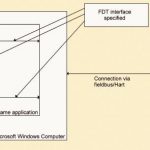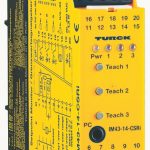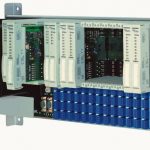FDT/DTM technology is convincing more and more users of its benefits. The transition from the old insular solution to an open system offers decisive advantages. A non-profit consortium is the driving force behind FDT/DTM technology. 34 well-known manufacturers of process and factory automation equipment have teamed up to form the FDT Joint Interest Group. This group continues to develop the open FDT system and forms working groups, for example to agree on common operating features and also to actively market the concept.
Peter Praske, Jörg Tauert
The disadvantages of insular solutions are self-evident. Every non-standard program requires increased effort and expense – even extending to the need for special operating systems. In addition to the difficulties caused by having to re-familiarise with the operating concept every time, incompatibility with other programs is a problem which is often encountered. However, setting devices on the PC has become established practice.
The great opportunity here is the potential which is presented by an open and manufacturer-independent platform. This opportunity is offered by FDT/DTM technology (FDT = Field Device Tool, DTM = Device Type Manager). FDT/DTM makes it easy for users: first of all, what is referred to as a frame application is installed. The device drivers provided by manufacturers run within this frame. The structure is comparable with a word processing program. A word processing program is an essential element when creating and editing text. A window within this program enables text to be input. All the necessary interfaces to the computer platform are provided by the word processing program.
An analogy with the automation world is clearly evident in Figure 1. The frame is provided by a program such as PACTware – the device driver corresponds to the text file. The device which is to be parameterised is physically located outside the computer. As a result, an additional driver is required for communicating with the device – a so-called communication DTM.
Standards ensure compatibility
A specification ensures smooth communication between the operating system, the computer hardware and the connected fieldbus devices. All interfaces are defined in the FDT specification. Manufacturers of field devices and the respective software are obliged to conform to this specification. The device drivers which are provided must also conform. A comprehensive range of tests are performed before a device driver is released. This ensures that the DTM complies with all specifications. Users can then assume that operation will not present any problems for their system. A high level of quality is assured by the two-stage certification process. Every interface is tested to ensure that it conforms to the specification. The tests are continuously improved. In future it is planned, amongst other things, to guarantee the conformity of the graphic user interface by means of a design directive.
Device and software manufacturers are addressing the needs of customers in this way. In future, customers can be sure that an identical method and manner of operation common to all manufacturers is guaranteed for all new DTMs. Thus, the last remaining hurdles from the old era insular solutions will be eliminated.
Parameter definition via DTM
The first step is easy – the decision with regard to a frame program. The PACTware available free of charge is a good example. The frame program can be downloaded from the Internet on the homepages of the respective manufacturers (e.g. www.turck.com).
Next, it is simply necessary to download the required device driver from the manufacturer’s web site. It is possible to proceed immediately after the frame application and device driver have been installed. The device is simply selected from a catalogue and assigned to a communication channel. The selection of field devices can be compiled to a project. A project of this nature can include part of a plant. Each user can immediately recognise the plant structure and safely access the correct tag number.
Another typical application: the maintenance personnel in a workshop could maybe structure a project so that every device type is available once. A significant advantage of this solution becomes evident. Users no longer need to know who manufactured the device and how the parameter definition program is called. They can continue to work in a familiar environment with the terminology to which they are accustomed.
It is even possible to apply FDT/DTM to Hart devices for which the parameters have to be defined and a DTM does not yet exist. A universal Hart DTM can be used for this purpose. This solution permits operation with the standard Hart variables.
The DTM is called up to configure the device. It provides the user interfaces for parameter definition, status display, monitoring and trends.
Safe commissioning with measured value monitoring
The current measured value as well as all output states can be displayed in a monitor window. All parameters can be archived, which allows the parameter sets to be reproduced effortlessly. Furthermore, analogue and digital outputs can be set via DTMs. This facilitates a significant reduction in commissioning and troubleshooting time. The trend window is selected to represent the progression of a measured and/or output variable. The measured results can be saved and transferred to other Windows applications (e.g. Excel) for further proces-sing.
Integrated Hart parameterisation with remote I/Os
In addition to the above-mentioned device DTMs, there are also communication DTMs. They allow access to the connected nodes. If a node performs the function of a router or a gateway, its DTM provides interfaces to the next communication level.
Hart field devices, connected to a remote I/O system, can thus be operated and maintained on the PC over a higher-level fieldbus.
By using Hart controllers in the analogue modules, the remote I/O system creates a Hart multiplex system. The DTM of this system serves the module and passes the Hart information to the field device. Expensive point-to-point connections between PCs and field devices are no longer required, as this concept facilitates manufacturer-independent, centralised access to all connected field devices.
cpp 428
Interface technology
Interface technology from Turck is available for DIN rail or 19“ mounting. The product spectrum includes switch isolators, analogue data transmitters with Hart functionality and valve control modules. SIL-certified devices are also offered. The implementation of a universal wide-range power supply makes these devices globally compatible, reduces inventory costs and simplifies servicing and maintenance.
Based on user-friendly FDT/DTM technology, the parameterisable devices can be operated on a PC, programmed by means of pushbuttons or adjusted with switches.
FDT Joint-Interest Group
More about the products from Turck
Share:









